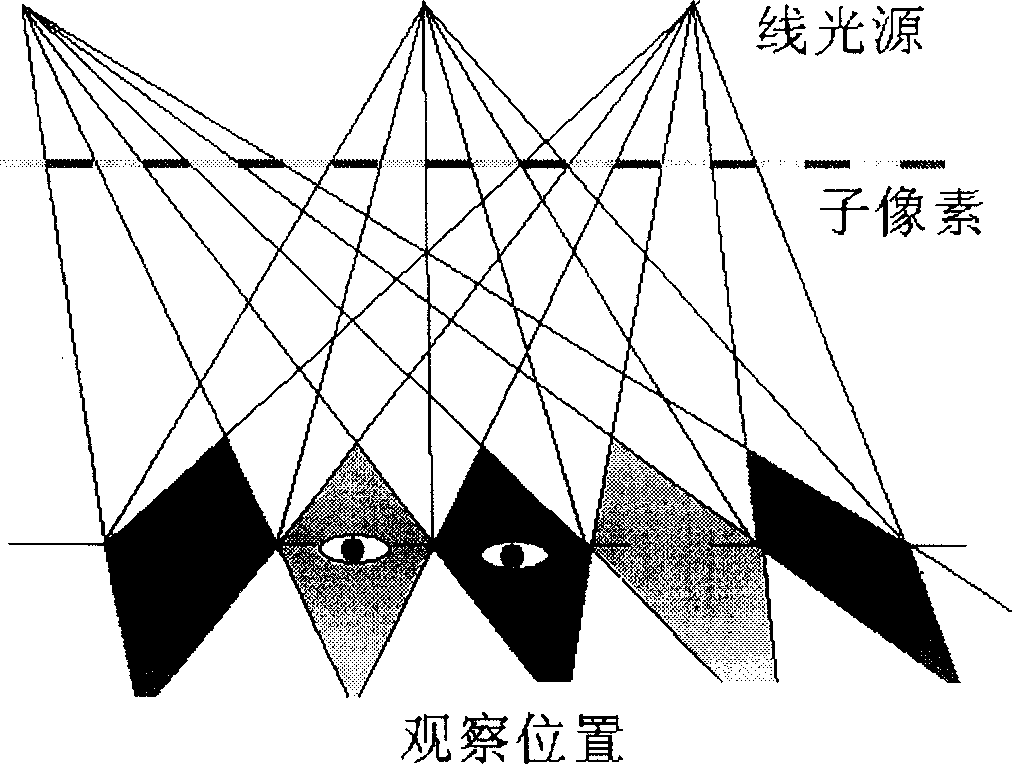2-D/pseudo-3-D display technology capable of switching over using low-density grating polaroid or plastic lens
A low-density, polarizer technology, used in optics, optical components, instruments, etc., to solve problems such as loss of image resolution
- Summary
- Abstract
- Description
- Claims
- Application Information
AI Technical Summary
Problems solved by technology
Method used
Image
Examples
Embodiment Construction
[0011] The working principle of ordinary liquid crystal display is as follows: the uniform white light emitted by the backlight module passes through the screen, the transmittance of different points on the screen is different, the color and brightness of the transmitted light are different, and the user sees different colors on the screen. Brightness images, people's left and right eyes observed exactly the same plane image, no stereoscopic.
[0012] When human beings observe a real object, there is a distance between their eyes, and the images seen by the two eyes are slightly different. The human brain automatically fuses the two images to produce a three-dimensional effect. The pseudo-3D display technology does not create a 3D object that is consistent with the real object. Instead, several images are displayed at the same time, and the left and right eyes get different images respectively by using optical methods, so that people have a three-dimensional effect.
[0013] T...
PUM
 Login to View More
Login to View More Abstract
Description
Claims
Application Information
 Login to View More
Login to View More - R&D
- Intellectual Property
- Life Sciences
- Materials
- Tech Scout
- Unparalleled Data Quality
- Higher Quality Content
- 60% Fewer Hallucinations
Browse by: Latest US Patents, China's latest patents, Technical Efficacy Thesaurus, Application Domain, Technology Topic, Popular Technical Reports.
© 2025 PatSnap. All rights reserved.Legal|Privacy policy|Modern Slavery Act Transparency Statement|Sitemap|About US| Contact US: help@patsnap.com



